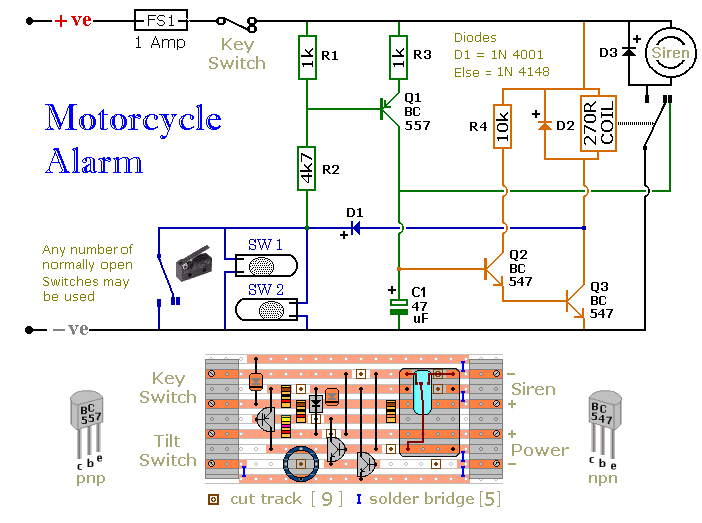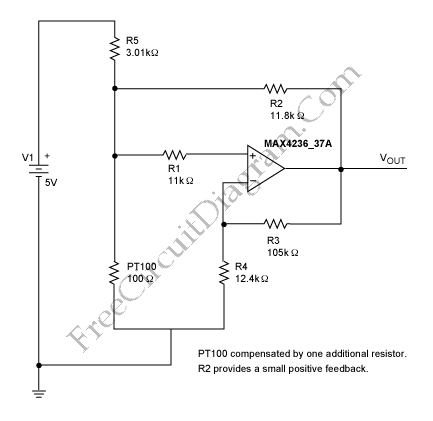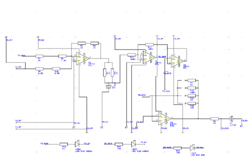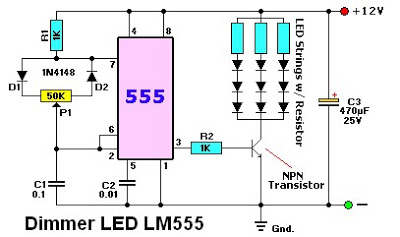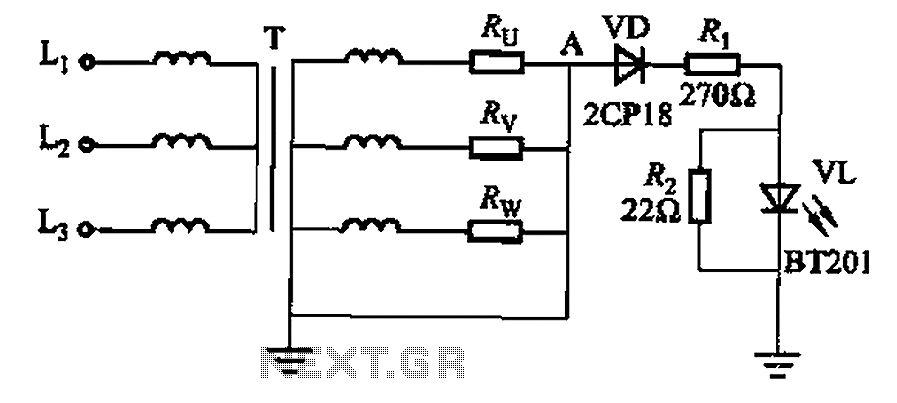
Water Sensor Alarm using LM380
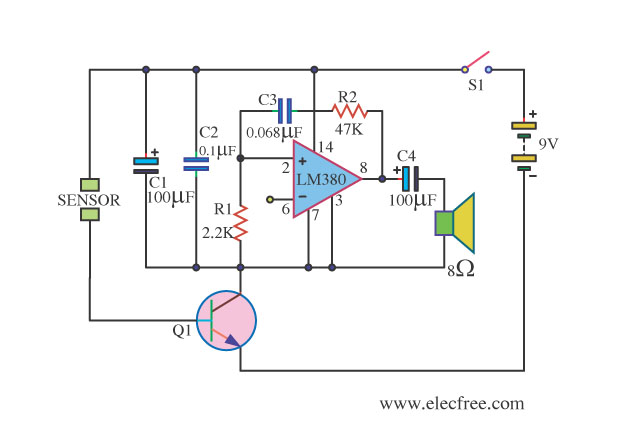
This is a water sensor alarm circuit designed to warn users about water levels. It activates an audible alarm when the sensor comes into contact with water, such as during rainfall.
The water sensor alarm circuit functions primarily as a detection mechanism for water presence. It typically consists of a water level sensor, a microcontroller or comparator circuit, and an audio alarm module. The sensor is often made up of conductive materials that complete a circuit when submerged in water, triggering the alarm.
When the sensor detects water, it sends a signal to the microcontroller or comparator, which processes the input. If the water level is above a predetermined threshold, the microcontroller activates the audio alarm, which can be a buzzer or speaker, producing a loud warning sound to alert individuals in the vicinity.
The circuit can be powered by a standard voltage source, such as a battery or a wall adapter, ensuring it remains operational during critical situations. Additional components may include resistors for current limiting, capacitors for noise filtering, and diodes for reverse polarity protection, enhancing the reliability and functionality of the circuit.
For practical applications, this water sensor alarm circuit can be utilized in various environments, including homes, gardens, and industrial settings, to prevent water damage and ensure safety during heavy rainfall or flooding events. The design can be further enhanced by incorporating features such as adjustable sensitivity, a visual indicator (like an LED), or wireless connectivity for remote monitoring and alerts.This be Water Sensor Alarm Circuit for warn the water level , by when sensor point touch the water or the rain. The circuit have a voice loud warn hear.. 🔗 External reference
The water sensor alarm circuit functions primarily as a detection mechanism for water presence. It typically consists of a water level sensor, a microcontroller or comparator circuit, and an audio alarm module. The sensor is often made up of conductive materials that complete a circuit when submerged in water, triggering the alarm.
When the sensor detects water, it sends a signal to the microcontroller or comparator, which processes the input. If the water level is above a predetermined threshold, the microcontroller activates the audio alarm, which can be a buzzer or speaker, producing a loud warning sound to alert individuals in the vicinity.
The circuit can be powered by a standard voltage source, such as a battery or a wall adapter, ensuring it remains operational during critical situations. Additional components may include resistors for current limiting, capacitors for noise filtering, and diodes for reverse polarity protection, enhancing the reliability and functionality of the circuit.
For practical applications, this water sensor alarm circuit can be utilized in various environments, including homes, gardens, and industrial settings, to prevent water damage and ensure safety during heavy rainfall or flooding events. The design can be further enhanced by incorporating features such as adjustable sensitivity, a visual indicator (like an LED), or wireless connectivity for remote monitoring and alerts.This be Water Sensor Alarm Circuit for warn the water level , by when sensor point touch the water or the rain. The circuit have a voice loud warn hear.. 🔗 External reference
